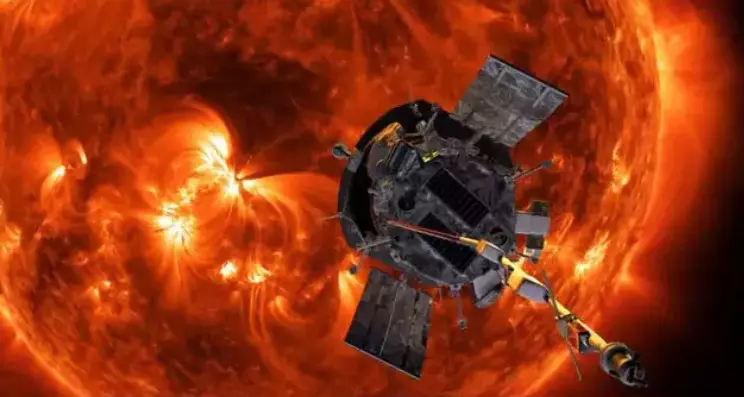TRENDING TAGS :
Aditya L-1 reaches destination Lagrange Point-1
With this, Aditya-L1 was also placed in its final orbit. Here Aditya will study the Sun for two years and collect important data. This first Sun study mission of India was launched by ISRO on 2 September, 2023.
After landing on the moon, Indian Space Research Organization (ISRO) has created another history by landing Aditya L-1 on the Sun mission, and has achieved a record by reaching its destination Lagrange Point-1 (L1). With this, Aditya-L1 was also placed in its final orbit. Here Aditya will study the Sun for two years and collect important data. This first Sun study mission of India was launched by ISRO on 2 September, 2023.
Prime Minister Narendra Modi has also expressed his happiness over the success of ISRO. Praising ISRO by tweeting, he wrote that 'India has achieved another milestone. India's first solar observatory Aditya-L1 reaches its destination. A testament to the tireless dedication of our scientists in realizing one of the most complex space missions. This extraordinary achievement deserves appreciation. We will continue to push new frontiers of science for the benefit of humanity." He further said that he joins the nation in appreciating this extraordinary achievement.
What is L-1 point?
The region around the L-1 point is known as the halo orbit, one of five places in the Sun-Earth system where the gravitational effects of the two bodies are in equilibrium. Broadly speaking, these are the places where the gravitational forces of both bodies balance each other. There is stability at these five places between the Earth and the Sun, due to which the object present here does not get trapped in the gravity of the Sun or the Earth.
The L-1 point is about 15 lakh kilometers away from the Earth. This is only one percent of the total distance between the Earth and the Sun. The total distance between the two bodies is 14.96 crore kilometers. According to an ISRO scientist, the halo orbit will rotate along with the Earth's rotation around the Sun.
Aditya L-1 completed its 126 days of traveling in space on Friday. Aditya started collecting scientific data and imaging the Sun on September 18,16 days after starting his journey. Scientists have so far obtained high-energy X-ray, full solar disk images of solar flares from L-1. Four instruments, including the Solar Wind Ion Spectrometer of PAPA and ASPEX, are currently active and functioning well. The suite payload will be activated first after reaching the Halo orbit.
Seven payloads are deployed:
Seven scientific payloads have been deployed on Aditya. These include the Visible Emission Line Coronagraph (VELC), Solar Ultraviolet Imaging Telescope (SUITE), Solar Low Energy X-ray Spectrometer (Solexus), High-Energy L1 Orbiting X-ray Spectrometer (HEL1OS), which directly track the Sun. Do it. At the same time, there are three in-situ (on-site) measuring instruments, which include Aditya Solar Wind Particle Experiment (ASPEX), Plasma Analyst Package for Aditya (PAPA), and Advanced Three Dimensional High Resolution Digital Magnetometer (ATHRDM).



